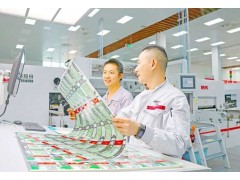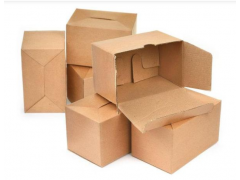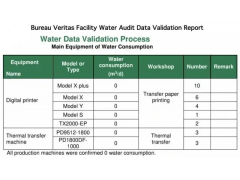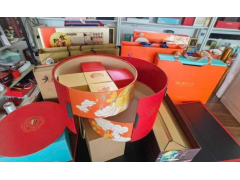The packaging industry is expected to change over the next decade, especially in paper-based packaging. The shift is driven by the growing movement against plastic packaging and awareness of its impact on the environment. Governments and brands are actively driving change through legislation and innovative packaging solutions. This article briefly explores the leading role that brands and innovative technology companies are playing in promoting sustainability through the adoption of paper-based packaging alternatives.
Major brands are actively seeking sustainable alternatives and leading the charge towards paper packaging. Absolut Vodka, for example, recently announced it is trialling paper bottles for its flagship vodka product as part of its commitment to a more sustainable future. Eileen Frelid, global director of future packaging at Absolut, said the paper’s high recycling rate and attractive tactile feel were key factors in their decision. In line with Absolut’s goals, the brand is proud to announce its trajectory to become carbon neutral by 2030. Impressively, the Absolut distillery emits 98% less emissions than the industry average, consolidating as a leader in sustainable practices.
Another example is the well-known beverage manufacturer Diageo, which partnered with Pilot Lite to form British paper bottle company Pulpex in its ongoing efforts to redefine the boundaries of sustainable packaging. Pulpex makes custom paper bottles for a variety of liquid products, and Diageo plans to package Johnnie Walker whiskey in Pulpex bottles.
Diageo said the thoughtfully designed containers actively contribute to Diageo's commitment to the United Nations Sustainable Development Goals, which focus on promoting "responsible consumption and production". Well-known brands such as Pepsi-Cola, Unilever and Castrol have also joined forces with Pulpex to develop paper bottle solutions for their iconic products. The product enables brands to reimagine packaging design without compromising on versatility and quality.
Collectively, these examples show that leading food and beverage brands are adopting paper packaging at scale. Mars announced a trial of paper-wrapped Mars bars, abandoning traditional plastic packaging. Nestlé, on the other hand, has developed a high-speed flow packaging line for packaging KitKat chocolates in paper. Brands are driving innovation in the development of paper-based packaging solutions. They are investing in research and development to create packaging materials that are both sustainable and practical. By partnering with packaging manufacturers, they are pushing the boundaries of paper packaging, exploring advanced technologies and processes to enhance its durability, moisture resistance and other desired properties.
Archipelago Technology is an influential player in the field of packaging coatings, launching disruptive innovations to meet the growing demand for sustainable packaging solutions. Their non-contact coater uses PowerdropTM technology, a large-scale inkjet printing system that sprays viscous liquids in droplets with precision and consistency that are difficult to achieve with other technologies, such as spray coating.
The important thing is that every drop of water only flows where it should go and not elsewhere. Powerdrop enables packaging manufacturers to coat rigid paper containers to make them waterproof while keeping the inner paper core clean so they can be recycled. Because Powerdrop uses a highly concentrated coating fluid with virtually no overspray, significant savings are achieved in energy use and overspray disposal, resulting in lower operating costs and reduced greenhouse gas emissions. Powerdrop could help save thousands of tonnes of CO2 on a production line while solving the long-standing challenge of paper containers maintaining their structural integrity when in contact with liquids.
With the huge potential of this market, more innovations are expected to emerge aimed at meeting the demand for sustainable paper packaging alternatives, some of which we can expect to see showcased at drupa 2024. The shift from plastic and glass to paper packaging brings many advantages to various stakeholders. Consumers will benefit from the shift to paper packaging in a number of ways.
First, paper packaging meets people's growing demand for environmentally friendly products and packaging. By choosing brands that prioritize sustainability, consumers can make environmentally responsible choices and contribute to a green future. Additionally, paper packaging often has tactile and aesthetic appeal that enhances the overall product experience. It can provide a premium, natural and earthy feel that resonates with consumers looking for a more authentic and organic image. Paper packaging is lightweight and easy to handle, making it easy for consumers to carry and dispose of responsibly.
Retailers can capitalize on the popularity of paper packaging to boost their eco-friendly image and attract environmentally conscious shoppers. By offering products in paper packaging, retailers can differentiate themselves from competitors and appeal to a growing segment of conscious consumers. This can increase foot traffic, increase sales, and increase customer loyalty. In addition, retailers can further strengthen their brand image and market positioning by partnering with brands that prioritize sustainability and strengthen their commitment to environmental responsibility.
Within the supply chain, the adoption of paper packaging creates opportunities for innovation and growth throughout the supply chain. Packaging manufacturers, paper suppliers and other stakeholders can collaborate to develop new technologies and solutions to meet sustainable packaging needs. This shift has spurred the development of a circular economy, in which materials are recycled, reducing waste and minimizing environmental impact.
Brands using paper packaging can enhance their image and reputation by positioning themselves as environmentally responsible and forward-thinking. Sustainability is a growing concern among consumers, and brands that prioritize sustainable practices often increase customer loyalty and positive brand perceptions. By embracing paper packaging, brands are demonstrating their commitment to reducing plastic waste and working toward a greener future. This can improve brand equity, customer trust and competitive advantage in the market.
Governments around the world are imposing stricter regulations on plastic packaging, creating a regulatory environment that encourages the adoption of sustainable alternatives. By proactively embracing paper packaging, brands can ensure compliance with evolving legislation and reduce the risk of fines or penalties. This proactive approach can enhance brand reputation and demonstrate a commitment to social and environmental responsibility.
The packaging industry is on the verge of a major transformation, with paper packaging becoming the leading alternative to plastic and glass. Well-established brands in the food and beverage industry are at the forefront of this shift, recognizing the importance of sustainability and seizing opportunities to meet consumer demands. By adopting paper packaging, these companies not only contribute to a cleaner environment, but also benefit from increased consumer loyalty, improved brand image, and compliance with changing regulations.
As the next decade unfolds, the paper packaging revolution will bring significant growth, innovation and a more sustainable future to the entire industry. Brands, retailers and policymakers working together are key to driving this revolution forward, ultimately paving the way for a greener, more sustainable world.







